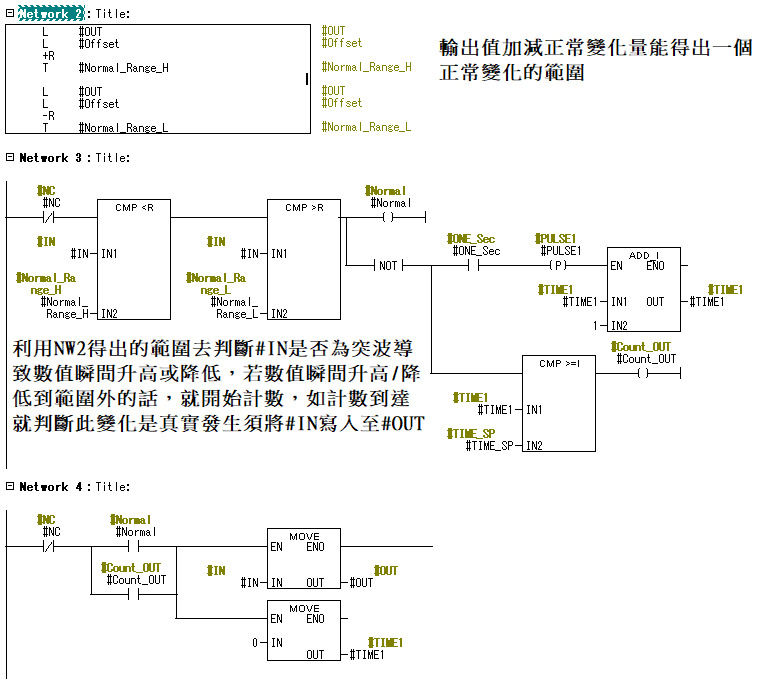PLC programming to filter surge
Today we're going to talk about surges
In electrical engineering, spikes are transient voltage signals (voltage surges) or current signals (current surges) that are fast and short-lived in circuits.
In the cases we received, some customers reported that some of the PLC's AI modules have some return signals and sometimes there are surges. In the circuit, the transient high voltage (overvoltage) that is fast and does not last for a long time is generally due to the following reasons which produces:
1. Lightning
2. Power failure
3. Circuit breaker trips
4. Short circuit
5. Transients of other large power equipment on the same power source
6. Malfunction of the power company
7. Electromagnetic pulses (EMPs) produced by electromagnetic field energy with frequencies ranging from 100 kHz to 1 MHz.
8. Inductive surge
A surge is a phenomenon in which a voltage or current rises sharply in the positive or negative direction.
Surge is also called transient pulse, Peak (as shown below)

A transient pulse is what most people know as a glitch or spike. Many different terms have been used to describe transient pulses such as impulses, glitches, electrical glitches and spikes.
Causes of transient pulses include lightning, poor grounding, inductive load switching, utility power troubleshooting, and electrostatic discharge (ESD), which can result in loss (or damage) of data or even damage to equipment. If the signal interference causes a surge, it is necessary to find the interference source and prevent the interference source from continuing to affect, which requires a large labor cost. We Longzhong use the PLC program to filter out the surge, so that customers can analyze the signal. Do not cause misjudgment.
Surge filter logic description

Source: White Paper No. 18
Longzhong providesTechnical Advisory Services | Tel: 06-243-7822




